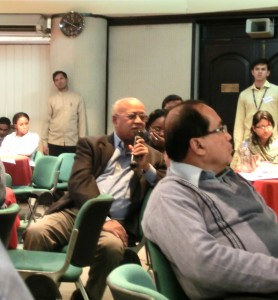Here is a hypothetical scenario: An issue arises on a project. A couple of meetings take place to discuss the outcome, and the positions are laid out. Resolution doesn’t occur and tempers may flair. An email correspondence ensues and after more meetings, discussions and painstaking report reviews the project decides there is need for a new strategy. The project manager decides to contact the Social Innovation Lab, and our enthusiastic team decides to embark on this exciting project! However, there is just one problem. None of the meetings were properly documented. People’s memories of the meeting become the sole source gospel and are expected to give an accurate picture of how the events played out. This scenario of inadequate documentation is an unkind reality to most of us. Good documentation just doesn’t occur by accident. The opposite extreme, exhaustive documentation of every detail, leads to its own challenges; it’s difficult to wade through it and find the most important signals.
This is where concept mapping can help! It’s a useful technique that improves the way we record information, aids and quickly structures the subject of discussions. Concept maps show a graphical representation of notes and makes organizing and representing knowledge more enjoyable. The relationship between concepts can be articulated in linking phrases and helps visualize these concepts more systematically.
Last week I came across a concept mapping software called Freemind and I decided to test its efficiency on Innovation Day. FreeMind is a free, Java-supported software, and can be downloaded here. It can be used for brainstorming, taking down notes or just visualizing different concepts in your head. It organizes information in a tree-structure which makes it easier to understand notes at a single glance. I found it very user-friendly, easy to add ‘nodes’ and move things around within each category. There is a list of icons that can be used to emphasize on what is important and which topics need immediate attention. The information on the maps is also expandable and collapsible. This makes it possible to store much more information in your notes, without overwhelming you. It’s also possible to add hyperlinks and pictures while taking down notes. Once you’re done, you can simply export your notes to the blog at a HTML file or convert it to a JPEG or PDF format.
FreeMind on Innovation Day
Innovation Day was a fun day of discussions, learning and reflecting on experiences from BRAC wide representatives. It was a great opportunity for staff to discuss interesting innovations within and outside BRAC.
I used FreeMind to map the discussions of the day and I thought it worked out great! Since the notes are collapsible, I had the option of referring to what interested me the most. The main topics of the day are divided into parent nodes and further sub-divided into subjects discussed under each topic. I also added additional reading material, attached videos and used the ‘group icon’ symbol to illustrate which ones were discussions.
I’m sharing my notes here as an example of what a final “report” can look like. I had some help from ICT to temporarily host the map online (since blogger wouldn’t let me upload it).
Please click on the image below and you will be re-directed to the concept map. Do you think this software will help you manage your notes better? We’d love your feedback!


